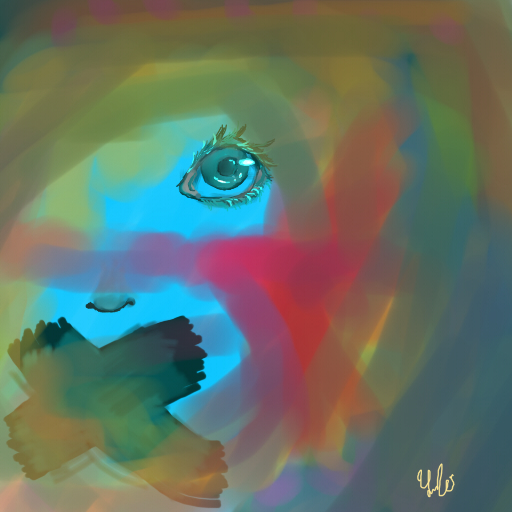Post by HLTD50 student KAKhalfan
This week’s blog post will be a continuation of last week’s podcast on the importance of multiple stories for health-related storytelling. In the podcast I discussed the ways that Catherine Hernandez’s Scarborough depicted how multiple stories encapsulate Arthur Frank’s ‘web of stories’ (described in his book The Wounded Storyteller), effectively reducing the isolation many minority individuals experience. This week’s blog post will be a transition from that discussion, by focusing on Maliha Aqueel’s recent article in The Guardian, “Muslim women speaking up against violence are silenced. We must amplify their voices”.
Aqueel’s article describes the active policing of Muslim women activists and violence survivors’ voices within their Muslim communities and the prejudice and racism they experience outside of their communities when speaking against oppression. This article prompts me to once again think of the negative implications that a single story can have on marginalized populations.
Individuals who enjoy privilege within specific communities, as well as those who have privilege across larger sectors of society, often ignore the importance of connections within the stories of the marginalized. This is evident in Aqueel’s article as she outlines the many ways that Muslim women are forced to silence their voices so that only those in power (i.e. clerics, religious scholars, and men) are able to tell women’s stories.
For example:
“The prevalent patriarchal order dictates which forms of violence against Muslims are more urgent and demands activism on [Muslim women’s] part”.
“When Muslim women speak up about [Islamophobia], we are accused of creating theatre”.
“Pretending that Muslim women are somehow responsible for Islamophobia if they talk about violence they face”.
“Casting Muslim women activists as villains […] [when] speaking publicly against injustices”.
By relaying the stories for Muslim women, these figures of authority speak of women’s experiences by cutting out pieces of other women’s stories interconnected with other marginalized Muslim women’s experiences of oppression. According to Frank, “[…] any story comes to me as part of the web of all stories; no story stands alone. Each story weaves threads that are original in that person’s experience. Yet everything that is said carries the resonance of previous stories, because every indignation and aspiration, every expression of despair and act of courage has been told before” (Frank, 2013, p. 220). Thus, the ‘web of stories’ strives within a previous recollection of another’s story so that no story, no individual, stands alone.
*
However, western literature and contemporary feminist writing often depict Muslim women “as objects of Otherness” (Zine, 2002, p. 2): in other words, as objects that stand alone. Literature usually represents Muslim women through a political lens relating to “material and ideological conditions characterizing the relationship between “the West” and Islamic societies […] by shifts in the balance of power between these two societies” (Zine, 2002, p. 2). The novel Scarborough counteracts this convention of Western literature by depicting the perspective of a Muslim, hijab-wearing, South Asian character, Ms. Hina, who experiences Islamophobia from a parent of one of her students at the literacy centre in Toronto.
Aqueel mentions in her article that “anti-Muslim racists […] who wish to uphold patriarchal structures of oppression, […] whom would rather see Muslim women disappear”. Hernandez depicts this assessment through Ms. Hina’s experiences with a racist parent Corey. In the beginning of the novel, Corey’s tells his young daughter, Laura, that hijab wearing women “eat babies.” Laura then innocently asks Ms. Hina, “Why do you wear [the hijab]?” (Hernandez, 2017, p. 61). Ms. Hina answers by saying, “Because it reminds me of who I am” (p. 61). This demonstrates a transmission of prejudice that Corey hopes can influence his daughter’s beliefs to further isolate Muslim identities. Though in this case, Ms. Hina attends to her pride for the hijab by counteracting the stigma Corey has revealed to his daughter – hopefully interrupting the intergenerational transmission of racism (see Durietz, 2009).
Additionally, Aqueel discusses that when Muslim women try to speak out, they are often met with silence. Henandez depicts this later in the novel when Corey catches Laura and Ms. Hina hugging and immediately snatches Laura away from that moment. It is evident that Ms. Hina wants their moment to continue but is at lost for words as she says, “I watched them leave, knowing I should say something. Anything” (Hernandez, 2017, p. 135). In this moment, Ms Hina’s actions are necessarily limited, perhaps sustaining the idea that Muslim women are seen as powerless, silenced and voiceless victims, regardless of their attempts to create authority of their identities (Zine, 2002).
To conclude, Aqueel’s article speaks to the current issue of Islamophobia and how Muslim women are silenced when conversing about their experiences with this oppression. Western literature and contemporary feminist writing often articulate Muslim women as ‘the Other’, removing their power and voice in society. However, through characters such as Ms. Hina, literature like Hernandez’s novel Scarborough is transitioning away from the single story into an interrelated connection of different stories that illuminate the experiences of oppression that Muslim women may experience in our community and society more broadly.
